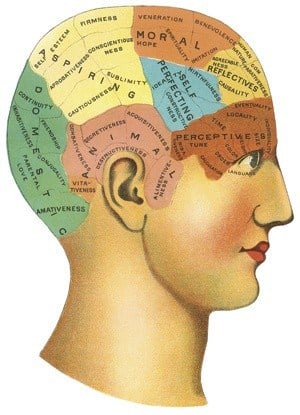Hoping for sex with two women is common but fantasizing about golden showers is not. That’s just one of the findings from a research project that scientifically defines sexual deviation for the first time ever. It was undertaken by researchers at Institut universitaire en santé mentale de Montréal and Institut Philippe-Pinel de Montréal, affiliated with University of Montreal. Although many theories about deviant sexual fantasies incorporate the concept of atypical fantasies (paraphilias), the scientific literature does not describe what these types of fantasies actually are. In North America, the fifth edition of the Diagnostic and Statistical Manual of Mental Disorders (DSM-5) refers to “anomalous” fantasies, while the World Health Organization talks about “unusual” fantasies in defining paraphilias. But what is an unusual sexual fantasy exactly? The prestigious Journal of Sexual Medicine published the answer today.
“Clinically, we know what pathological sexual fantasies are: they involve non-consenting partners, they induce pain, or they are absolutely necessary in deriving satisfaction. But apart from that, what exactly are abnormal or atypical fantasies? To find out, we asked people in the general population, as simple as that,” said Christian Joyal, lead author of the study. “Our main objective was to specify norms in sexual fantasies, an essential step in defining pathologies,” he noted. “And as we suspected, there are a lot more common fantasies than atypical fantasies. So there is a certain amount of value judgment in the DSM-5.”
Since the majority of studies on sexual fantasies are conducted with university students, this study required finding a sample of adults willing to describe their sexual fantasies. As a result, 1,517 Quebec adults (799 men and 718 women; mean age 30 years) responded to a questionnaire describing their sexual fantasies, as well as describing their favourite fantasy in detail (hybrid quantitative and qualitative research design). The results are more than interesting.
Results
- The nature of sexual fantasies are varied among the general population. Few fantasies can be considered statistically rare, unusual, or typical (see glossary).
- However, not surprisingly, the study confirms that men have more fantasies and describe them more vividly than women. The study also tells us that a significant proportion of women (30% to 60%) evoke themes associated with submission (e.g., being tied up, spanked, forced to have sex).
- Importantly, unlike men, women in general clearly distinguish between fantasy and desire. Thus, many women who express more extreme fantasies of submission (e.g. domination by a stranger) specify that they never want these fantasies to come true. The majority of men, however, would love their fantasies to come true (e.g. threesomes).
- As expected, the presence of one’s significant other is considerably stronger in female fantasies than in male fantasies. In general, men in couples fantasize much more about extramarital relationships compared to women.
“One of the most intriguing findings has to do with the significant number of unique male fantasies, for example, regarding shemales, anal sex among heterosexuals, and the idea of watching their partner have sex with another man. Evolutionary biological theories cannot explain these fantasies, which, among males, are typically desires,
“Overall, these findings allow us to shed light on certain social phenomena, such as the popularity of the book “Fifty Shades of Grey” with women,” noted Joyal. “The subject is fascinating. We are currently conducting statistical analyses with the same data to demonstrate the existence of homogeneous subgroups of individuals based on combinations of fantasies. For example, people who have submission fantasies also often report domination fantasies. These two themes are therefore not exclusive, quite the contrary. They also seem associated with a higher level of satisfaction.”


